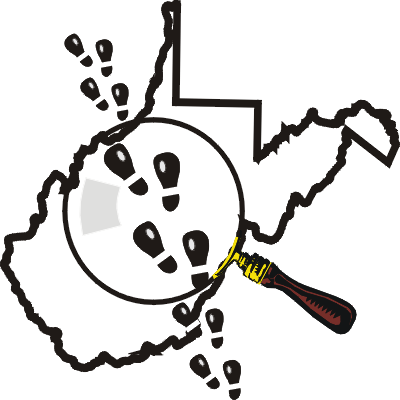
West Virginia
Infectious Disease Epidemiology Program
 |
West Virginia |
PROTOCOL:
Public Health Action
Recommended Chemoprophylaxis Regimens for High Risk Contacts and Index Cases of Invasive Meningococcal Disease
*Not recommended for use in pregnant women.
Disease Prevention ObjectivesReduce the risk of disease through the education of the general public to:
Disease Control ObjectivesReduce the risk of secondary cases by early identification and prophylaxis of close contacts to cases. Disease Surveillance Objectives
Public Health SignificanceInvasive meningococcal disease is of public health importance, is frequently a cause of public health alarm and receives a high level of media attention. Responding to cases places heavy demands on clinical and public health disease control services. Neisseria meningitidis causes both endemic and epidemic disease, principally meningitis and meningococcemia. It is the leading cause of bacterial meningitis in children and young adults in the United States, with an estimated 2,600 cases each year. 10 - 15% of cases are fatal. Of patients who recover 11%-19% have a permanent hearing loss or other serious sequelae. Incidence of meningococcal disease peaks in late winter to early spring. Attack rates are highest among children 3-12 months of age and then steadily decline among older age groups. Persons who have certain medical conditions are at increased risk for developing meningococcal infection, including: persons with complement deficiency; persons with anatomic or functional asplenia; and selected research, clinical laboratory or industrial workers who may be exposed to Neisseria meningitidis aerosols. Clinical DescriptionThe signs and symptoms of meningococcal disease can vary widely. A person may have either meningococcal meningitis or meningococcemia, or both at the same time. The most common symptoms include:
In babies under one year of age, the soft spot on the top of the head (fontanel) may bulge upward. In newborns and small infants, the classic findings of fever, headache and neck stiffness may be absent or difficult to detect, and the infant may show only extreme listlessness, irritability, poor feeding and sometimes vomiting. Etiologic AgentNeisseria meningitidis is a Gram-negative diplococcus bacterium with multiple serogroups ( A, B, C, D, 29E, H, I, K, L, W-135, X, Y, and Z). Strains belonging to groups A, B, C, Y and W-135 are implicated most frequently in invasive disease. ReservoirHumans are the only known reservoir of Neisseria Meningitidis Mode of TransmissionBy direct contact, including respiratory droplets from nose and throat of infected people; infection usually causes only a subclinical mucosal infection; invasion sufficient to cause systemic disease is comparatively rare. Carrier prevalence of 25% or greater may exist without cases of meningitis. During epidemics, over half the men in a military unit may be healthy carriers of pathogenic meningococci. Fomite transmission is insignificant. Incubation PeriodThe incubation period is variable, 2-10 days, but usually 3-4 days. Infectious PeriodAn infected person is infectious as long as meningococci are present in nasal and oral secretions or until 24 hours after initiation of effective antibiotic treatment. Outbreak RecognitionWest Virginia has about 10 to 20 cases of meningococcal disease every year. An outbreak is an unusual increase of disease caused by a single serogroup above the expected number of cases. Outbreaks of serogroup C meningococcal disease (SCMD) have been occurring more frequently in the United States since the early 1990's, and the use of vaccine to control these outbreaks has increased. These outbreaks are characterized by increased rates of disease among persons who may have a common organizational affiliation or who live in the same community yet do not have close contact. An organization-based outbreak of serogroup C meningococcal disease(SCMD) is defined as the occurance of three or more confirmed or probable cases of SCMD during a period of <3 months is persons who have a common affiliation but no close contact per 100,000 persons. A community based outbreak of serogroup C meningococcal disease (SCMD) is defined as the occurrence of three or more confirmed or probable cases during a period of <3 months among persons residing in the same area who are not close contacts of each other and who do not share a common affiliation, with a primary attack rate of at least 10 cases per 100,000 population. Outbreak response requires detailed epidemiologic (contact tracing) and laboratory (serogrouping) investigation. If the outbreak strain is a vaccine strain, vaccination of the at risk population should be considered. Case Definition for Meningococcal MeningitisClinical Description Meningococcal disease manifests most commonly as meningitis and/or meningococcemia that may progress rapidly to purpura fulminans, shock, and death. However, other manifestations might be observed. Laboratory criteria for diagnosis Isolation of Neisseria meningitidis from a normally sterile site (e.g., blood or cerebrospinal fluid (CSF) or, less commonly, joint, pleural, or pericardial fluid) Case Classification Probable: a case with a positive antigen test in cerebrospinal fluid or clinical purpura fulminans in the absence of a positive blood culture. Confirmed: a clinically compatible case that is laboratory confirmed. Comment Positive antigen test results from urine or serum samples are unreliable for diagnosing meningococcal disease. Laboratory Diagnosis of Meningococcal MeningitisThe diagnosis can be made by growing bacteria from a sample of spinal fluid, blood or other sterile fluids. The spinal fluid is obtained by performing a spinal tap, in which a needle is inserted into an area in the lower back where fluid in the spinal canal is readily accessible. Identification of the type of bacteria responsible is important for selection of correct antibiotics. Serogrouping is performed by the office of laboratory services. Preventive Interventions
Surveillance Indicators
|
|
State
of West Virginia (WV) A-Z Listing of West Virginia's Reportable Diseases
|